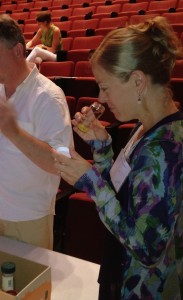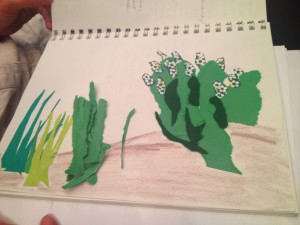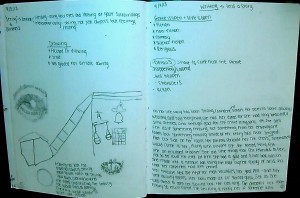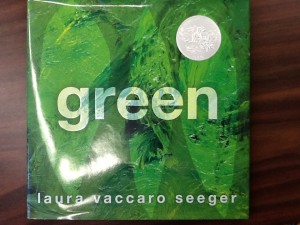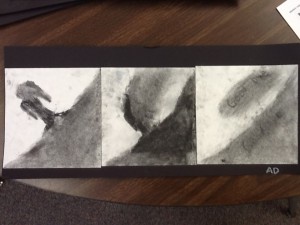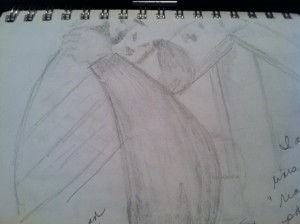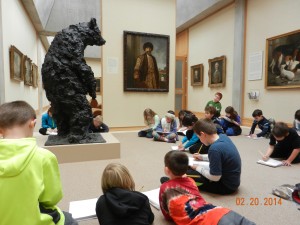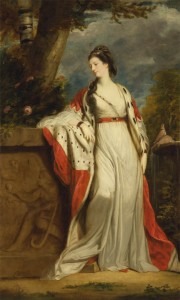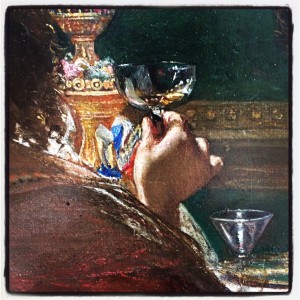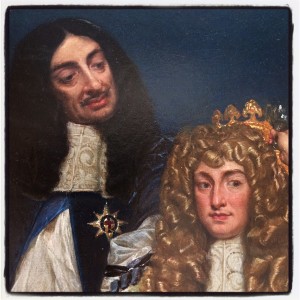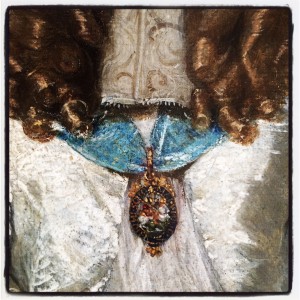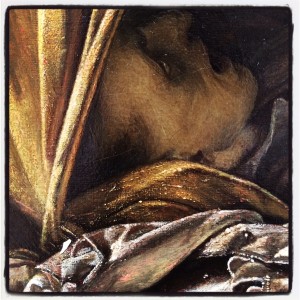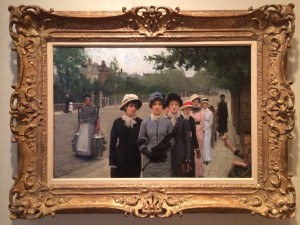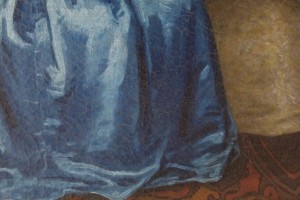Just a couple of months ago, the auditorium at the Yale Center for British Art was speckled with torn paper, art cards, paintbrushes, cups of water, scissors, glue sticks, items to smell, feel, hear, and see. It was also speckled with teachers – teachers painting, tearing, gluing, drawing – and it was very quiet. The Summer Institute for Visual Literacy was under way. Out of the silence, from the floor between two rows of auditorium seats, comes a voice: “I’m sorry to break the silence, but I just have to say – I could not be happier!”
Carol worked on a collage inspired by the phrase in the text doorway: “Calm Morning.” She finds collage “liberating because it doesn’t require perfection.”
Sabine smelled lemon at the smell doorway, then found an art card to help her picture a place she’d visited. She used chalk to evoke a “blurry memory.”
In the Doorways workshop, everyone found themselves in their own stories. Lindsay was back on a crowded train. Juliet was back in South India with the smell of coconut and Gaugin colors. Joe went back 30 years to share coffee with his brother in Texas. We left behind our fast-paced, distracting lives that week. We slowed down. We paid attention. We relaxed. And like a vacation, we knew it was going to be hard to take it with us.
As the first weeks of school are under way, I hope that teachers have found a way to harness this kind of deliberate, deep thinking and take it with them into the year. Whether it’s altering everything you do just a little bit by bringing visuals into the classroom, or just keeping a journal for yourself for a while, the end result is better learning – and happier teachers.


